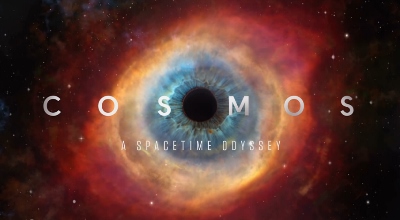Through a peculiar collaboration between Seth MacFarlane, creator of the notoriously controversial, nonsensical, yet widely popular TV shows, Family Guy and American Dad, and Ann Druyan, wife of one of the most prominent science communicators of the 20th century, the late Carl Sagan, with whom she co-wrote the immensely popular PBS documentary Cosmos, comes Cosmos: A Spacetime Odyssey– a sequel to the original Cosmos series.
The series premiered on March 9, 2014, on FOX and The National Geographic Channel. After watching the first two episodes, I can confidently say that the show is truly a treat for the imagination. Renowned astrophysicist Neil deGrasse Tyson takes the viewer on a fascinating journey free from the limits of time and space on the Ship of Imagination. Tyson communicates complex concepts of the Big Bang Theory, Evolution, Speciation, Artificial and Natural Selection with ease and simplicity. The enchanting soundtrack by Alan Sylvestri, together with Tyson’s scintillating narration, creates a magical and transcendental experience for the viewer. Enhancing the experience further are the convincing animations by Kara Vallow, known best for her work in quite contrasting shows such as (again!) Family Guy and The Cleveland Show.
Some striking images from the show include Jupiter’s Great Red Spot, characterized by a monstrous hurricane three times the size of earth; Voyager 1, traversing through space, waiting to be discovered by extraterrestrial intelligent life; macromolecular structures called Kinesins, diligently carrying cargo along microtubules inside a eukaryotic cell; and the lakes and rivers of liquid methane and ethane flowing through mountains of ice on the surface of Titan, the largest moon of Saturn.
A distinct feature of the first episode is Tyson’s seamless compression of the 13.8 billion years of the universe onto The Cosmic Calendar, in which every month is represented by approximately a billion years. Starting with The Big Bang on January 1, to the inception of life on earth on September 1, to the venture of Tiktaalik from sea to land on November 17, to the impact of an asteroid hitting the earth and effecting the extinction of dinosaurs on December 30, and finally to the evolution of humans, happening only on the last hour of the last day of the cosmic calendar, Tyson effectively provides an orientation to the dynamic and rather volatile universe we call home.
For discovering the mind-bogglingly vast cosmos, Tyson stipulates willingness to “test ideas by experiment and observation, build on ideas that pass the test, reject the ones that fail, follow the evidence wherever it leads and question everything. Accept these terms and the cosmos is yours!”
The show will feature thirteen episodes broadcasted to 37 different countries. It promises to offer profound insights, derived from the latest scientific evidence, into the origin of life and the future of our planet and our universe. So, stay tuned!
